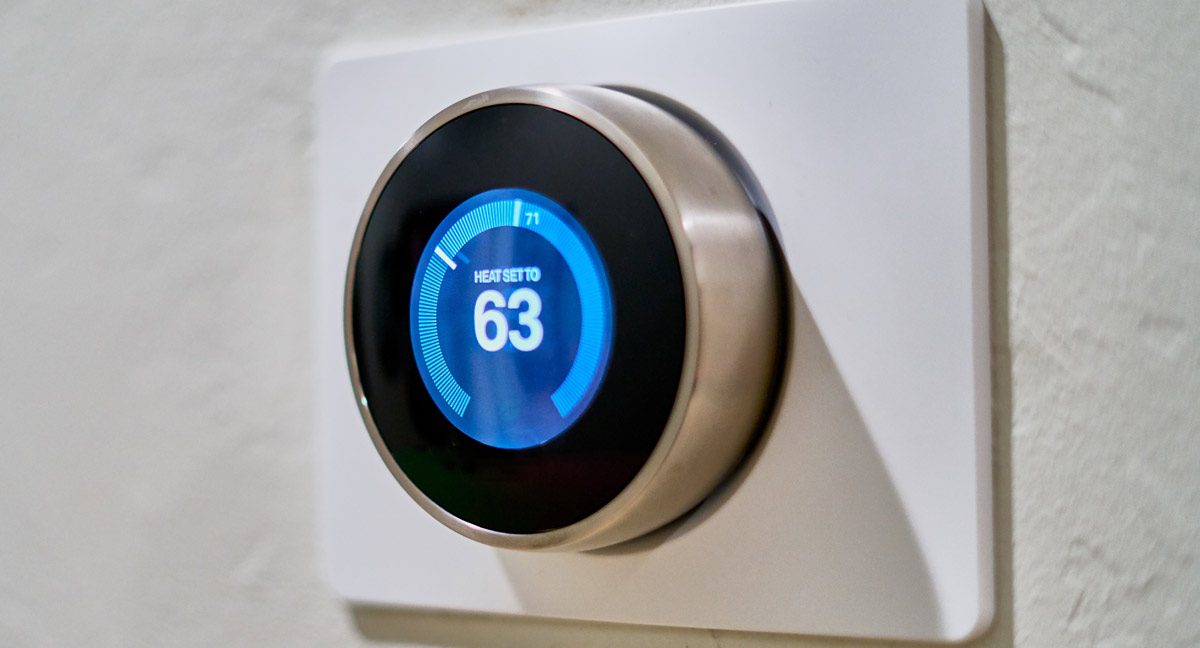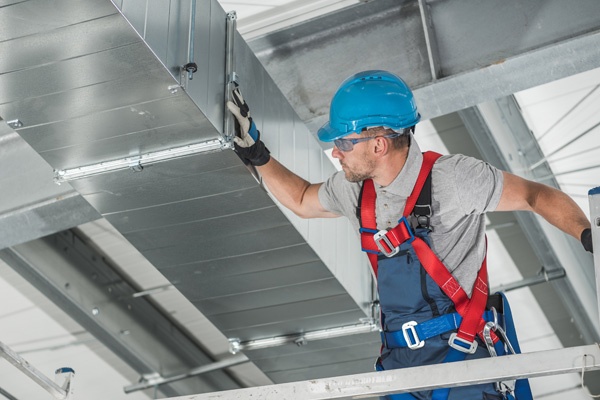3 HVAC Trends for 2020
HVAC Industry Shaping Trends
Commercial construction is changing. In 2020, the trend in sustainable building design, smart technologies, and energy efficient systems will continue to impact the HVAC industry.
These trends present new challenges as architects work to improve efficiencies and lower the carbon footprint of new construction, all while making comfort and sustainability more important than ever before.
Trend One: Sustainable Building Design
The movement called Green Building Design started in the late 1960s and became formalized in the 90s, especially with the founding of the Leadership in Energy and Environmental Design (LEED) certification in 1993.
A green building is one that in design, construction, and operation minimizes its impact on the environment and makes the most efficient use of energy.
When it comes to HVAC, sustainability starts with early planning and careful calculations. More than ever before, ductwork systems and heating and cooling units are “right-sized” to meet the needs of the building.
Careful attention is paid to heat loss calculations, duct sealing, and airflow volume and velocity.
Energy Recovery or Heat Recovery Ventilators (E/HRV) are heat exchangers that capture heat from exhaust air and transfer it to incoming cold air, and vice versa when the outside air is hot. The use of recovery ventilators alone can result in a 30% energy savings. In 2020, the Energy & Environmental Building Alliance (EEBA) hopes to introduce the most efficient and cost-effective E/HRV design to-date.
Employing E/HRVs correctly requires careful airflow and ductwork planning.
Trend Two: Smart Technologies
As the computer revolution continues to drive CPU costs down and wireless technologies connect more and more devices to an Internet of Things, it is more practical than ever before to heat and cool buildings based on their real-time energy needs.
Zoning systems can provide temperature control for entire floors or single rooms and can be installed to work with existing HVAC systems or designed to make the most of new construction. These systems are often installed with variable speed or two-stage HVAC systems, delivering peak performance without reaching peak capacity.
Zoning systems are known to lower energy bills by as much as 35%.
Smart thermostats can be remotely controlled from smartphone apps, activated by motion sensors, or controlled by intelligent computers to deliver heat and cooling where it is needed for the comfort of the occupants and to reduce the load in unoccupied areas.
For smart technologies to work, careful duct planning is required, including the use of dampers in ductwork runs.
Trend Three: Refrigerant Free Systems
A lot of work is going into advances in the refrigerants used in heating and cooling as well as into refrigerant-free systems.
R-22 (Freon) is set to expire for use in the USA in 2020. As of January, it will no longer be manufactured or imported.
Many older systems using Freon will be upgraded or replaced, as continuing to maintain them will become problematic in in the months and years ahead.
R410A is the new refrigerant, and while it is more environmentally friendly, it cannot be used in the old R-22 HVAC systems.
Refrigerant free technology includes DeVAP, Solar, and Geothermal HVAC.
Desiccant Enhanced Evaporative Systems (DeVAP) has been called a revolutionary technology. About a decade old, DeVAP is into its second generation and is gaining in popularity.
DeVAP starts by running water into a honeycomb media. A fan then blows through the honeycomb, causing the water to evaporate. Evaporative cooling takes place, reducing the temperature of the surrounding air. The DeVAP systems then uses a desiccant to absorb the excess humidity from the air. The end result provides similar cooling to today’s refrigerant-based HVAC, but with far less energy use and no environmental impact.
Solar HVAC uses solar modules to capture energy from the sun and send it to solar-ready air conditioners or heat pumps.
Geothermal HVAC has actually been in use for over 60 years, but is gaining notoriety in the US as the green building trend continues to grow. It is one of the most proven HVAC alternatives, as in Sweden and Switzerland, up to 75% of new homes use geothermal heating and cooling.
Growth and Innovation
Striving to meet these challenges has not slowed the growth of the HVAC industry, where cutting-edge innovations are poised to make a global impact. Growth through 2020 is still expected to be top nearly 6%.
At TCG, we work hard to stay ahead of the curve and keep our customers on the cutting-edge.
Would you like to work with an HVAC provider that goes beyond high-quality ductwork to deliver the kind of innovation, insight, and process optimization that will save you money and improve your bottom line?
Duct Fabrication is TCG’s Business
At TCG Duct, we can provide all or part of your HVAC fabrication needs. Your project is priced from a Material List or via a take off from prints you provide. Our team of engineers, fabricators and technicians are trained on the latest equipment and methods that enable us to meet your exacting standards.
Let TCG Duct be your partner in the HVAC Industry as an experienced, high-quality manufacturer of HVAC duct of all types. Our goal is to partner with our customers in ways that make the entire workflow from order to installation a seamless exercise in time and cost savings.
The Cincinnatus Group supplies traditional Rectangular Ductwork as well as Spiral Ductwork, Double Wall Spiral Duct , PCD Ductwork, and Industrial Welded Ductwork.
Why Choose The Cincinnatus Group?
As your partner, The Cincinnatus Group helps your organization stand out in its marketplace, win more bids, save substantial costs, and build the knowledge and skills your team needs to continually meet new challenges effectively and profitably.
Our strong work ethic, accountability, and pursuit of excellence sets us apart from other contracted sales and marketing services, and our unique expertise and proprietary ductwork systems make us unique amongst our competitors.
At The Cincinnatus Group, our fabrication partners gain access to our unique experience and expertise in contracted sales and marketing.
Our assets help you navigate the ever-changing markets of the 21st century.
To learn more about our Contracted Sales services or other services we provide: Contracted Estimating and Take Offs, CAD/BIM/Coordination Drawings, and Project Management Assistance, please call The Cincinnatus Group at 878-295-8009, or visit our Contact Us page today. We are looking forward to the opportunity to help grow your business.






